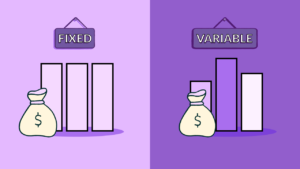Q4 2025 Update: How the 401(k) Keeps Powering American Retirement
Discover how the 401(k) continues to drive U.S. retirement savings in Q4 2025 amid inflation, market shifts, and new SECURE 2.0 updates.
Understand how the 401(k) continues to drive American retirement

As we close out 2025, it’s clear that the 401(k) continues to serve as the backbone of retirement planning in the United States. Despite ongoing inflation, market swings, and regulatory changes, this employer-sponsored plan remains a powerful tool helping millions of Americans build long-term financial security.
In this Q4 update, we’ll explore three major trends shaping the 401(k) landscape: participant behavior, policy developments, and the evolving opportunities, and risks, ahead.
1. Savers Stay Committed Despite Inflation and Market Volatility
One of the most striking developments this year is how resilient American savers have been. According to Charles Schwab’s 2025 401(k) Participant Study, only 11% of workers reduced their 401(k) contributions because of inflation or economic uncertainty.
Instead, most are tightening their personal budgets, 40% say they’ve cut discretionary spending and 39% are opting for cheaper alternatives, to keep their retirement savings on track.
This commitment shows how central the 401(k) has become to the financial life of the average worker. Even as household costs rise, most employees still see their 401(k) contributions as non-negotiable.
However, confidence has slipped slightly: just 34% of participants now say they feel “very likely” to reach their retirement savings goals, compared to 43% in 2024. The combination of inflation, market uncertainty, and lower real returns has clearly made savers more cautious.
2. New Rules Are Reshaping 401(k) Plans
The regulatory landscape around 401(k)s continues to evolve following the rollout of the SECURE 2.0 Act, with several provisions coming into effect this year and next.
These changes are designed to expand access, simplify participation, and enhance long-term outcomes for workers. Key updates include:
- Automatic enrollment for new employees in most newly created 401(k) plans, unless they opt out. Default contribution rates will start at 3% and gradually increase to 10–15%;
- Expanded eligibility for part-time workers: those who work at least two consecutive years (down from three) may now qualify for plan participation;
- Adjusted inheritance rules, requiring some beneficiaries to distribute inherited 401(k) funds within ten years — a change with major estate-planning implications.
Beyond legislation, plan sponsors and administrators are increasingly focusing on financial education, cybersecurity, and lifetime-income options. More employers are exploring in-plan annuities as a way to offer guaranteed income during retirement.
Some industry voices are also pushing for broader access to alternative investments, such as private equity or digital assets, within defined contribution plans. While that remains controversial, it highlights a growing desire for diversification beyond traditional stocks and bonds.
3. Opportunities and Risks Ahead
Looking into 2026, several new opportunities, and challenges, are emerging for both employers and participants.
Opportunities:
- Guaranteed-income hybrids: Products combining target-date funds with annuity components are gaining traction as a way to balance growth with predictable post-retirement income;
- Inclusion of alternative assets: More plan providers are evaluating how to integrate real assets, infrastructure, or private equity exposure into target-date portfolios to protect against inflation;
- Smarter technology: Automation and personalization tools are becoming more sophisticated, helping participants manage risk, optimize allocations, and stay engaged with minimal effort.
Risks:
- Market volatility: Fixed-income markets remain unpredictable, creating uncertainty for portfolios that rely on bonds for stability. Experts at TIAA warn that higher volatility is likely to persist into 2026;
- Fee pressure: Competition among plan providers is intensifying, putting pressure on administrative fees and potentially affecting service quality;
- Regulatory uncertainty: Shifts in federal policy could affect investor protections, fiduciary standards, or even the scope of permissible investment types;
- Transparency issues in alternative investments: While diversification can improve returns, limited liquidity and complexity could expose less experienced participants to unexpected losses.
4. Why the 401(k) Still Anchors U.S. Retirement
Despite these challenges, the 401(k) remains the cornerstone of American retirement savings, and for good reason. It’s flexible, accessible, and supported by powerful incentives like employer matching and tax advantages.
Even as inflation and market headwinds test savers’ patience, most participants continue to prioritize contributions and long-term growth.
Employers, meanwhile, are modernizing plan design to include automation, education, and lifetime-income solutions that help bridge the gap between saving and spending in retirement.
The next phase of the 401(k) story isn’t just about numbers on a statement, it’s about adapting to a changing workforce and strengthening retirement confidence in an uncertain world.
As 2025 draws to a close, one message stands out: the 401(k) isn’t just surviving economic turbulence, it’s evolving, innovating, and continuing to power the future of American retirement.






